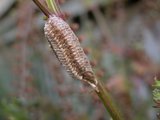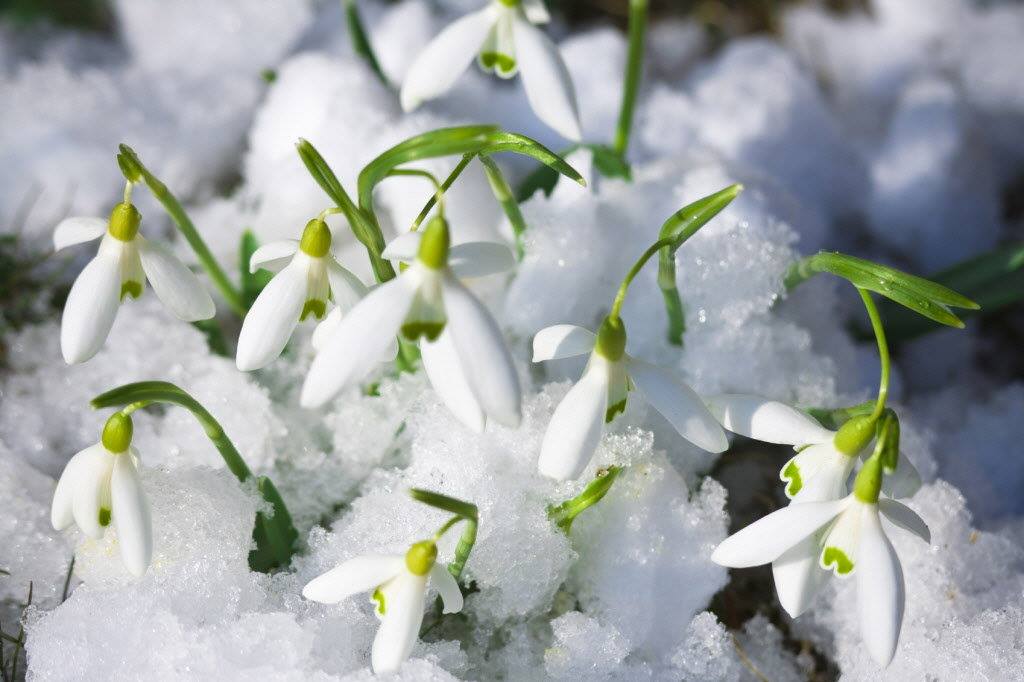To Do This Month
The weather is COLD – but not as cold as other places! January is the coldest month in New Mexico. Temperatures range from the low 20’s at night to day me highs in the upper 40’s on average, with a mean snowfall of 2 1⁄2 inches. The snow doesn’t last long on the ground except in higher elevatons. It’s sunny and not very windy, except when a snowstorm develops.
What’s Blooming Crocus – the harbinger of spring – comes up through frozen ground. Creeping rosemary is covered with ny blue owers if grown in a warm, protected spot. Xeric Blooms None this month. Garden Activities Once the holidays are over, it’s time for a new project. Do a little spring cleaning. Toss out your holiday catalogs and make room for seed and plant catalogs. It is too cold to do much outside, but it’s a good time to start planning. Spring seems like light years from now, but some advance planning and planting will save you me and money in the months to come. What new plants are being ordered? Are there any new colors or varieties of the old standbys? What plants have been designated “Perennial of the Year”? Is it something you already have? Would it fit in your garden? The gardening merits of a plant are not always obvious from its photograph. “Perennial of the Year” winners are worth checking out. Before you order by mail, see if your local nursery can order it for you. Most would be happy to try. Now is the time to study your garden from indoors. Find a window with a ray of sun and put a chair beside it. What can be seen from there? Delight in what you see; plant more of your favorite plants — perhaps a different color/variety. What shapes and colors are interesting? Consider planting an ornamental tree or shrub in a place where it can be seen from the window. Plants should be placed so they will be seen from a particular vantage point. For example, early bloomers should be placed where they can be seen from inside the house. Tall plants should be placed at the rear of a visual space. Chances are you will not be spending very much me outdoors in January and February. Late bloomers can be placed near the patio or other seating areas that are used in the summer. Start a gardening journal for ideas; later you can identify what worked well and what did not. Be sure to include copies of your original plans, as well as the final versions. Visit city parks, xeric gardens, and neighborhood yards to create a list of plants that have colorful fruit, interesting bark, or attractive seed heads during winter. This is a great way to make new friends as you walk around the neighborhood. Update garden journals. To Do List
Houseplants Let tap water stand overnight or use a chlorine remover before watering plants. Chlorine frequently causes brown tips on leaves and/or leaf drop on palms, spider plants, African violets, and corn plants. Some plants are NOT sensitive to chorine. If possible, give plants a footbath when watering. Set the plants in a basin of water — or the bathtub with 2-3 “ of tepid water — for several hours to thoroughly hydrate the roots. Remove dead leaves and flowers from forced bulbs. When the paperwhites and hyacinths bulbs are done blooming, plant in a pot with a slow-release granular fertilizer mixed into the soil. Set the pots where the leaves will receive some sunlight, and replant the bulbs outside in March for spring blooms next year. Paperwhites will need to be planted in a somewhat protected spot. Check all houseplants carefully for insects. White flies and fungus gnats are particularly obnoxious this time of year. Know your plants. Some plants should be completely dry before watering, while others should never dry out. Check to ensure applicable plants are dry before watering. Over-watered plants are more vulnerable. Ensure that all plants have suficient humidity. This is an excerpt from the calendar published by the Albuquerque Master Gardeners. www.abqmastergardeners.org. Visit their website for a schedule of classes and events!
0 Comments
|
Archives
March 2018
Categories |


 RSS Feed
RSS Feed